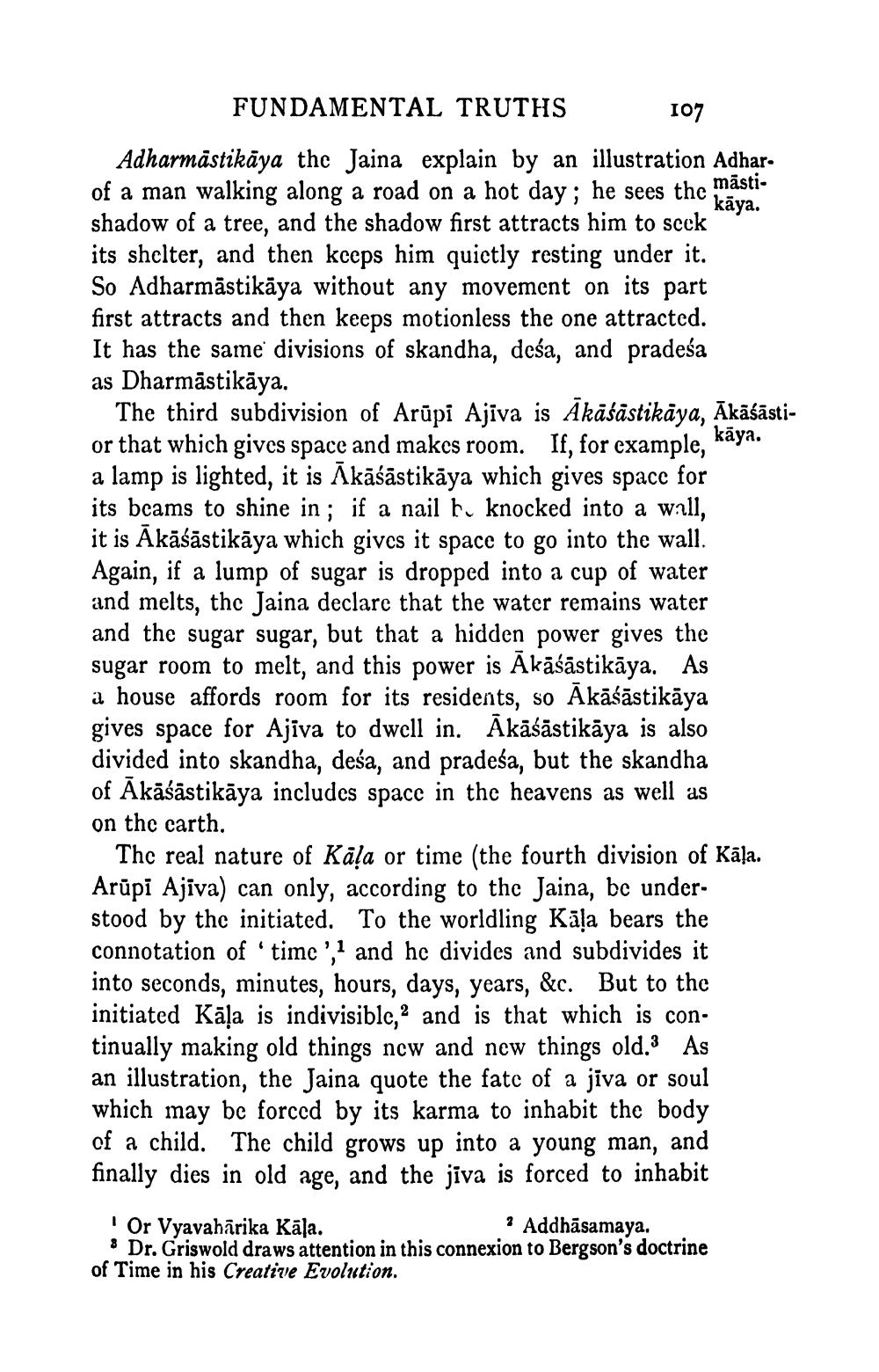________________
FUNDAMENTAL TRUTHS
107
Adharmāstikāya the Jaina explain by an illustration Adharof a man walking along a road on a hot day; he sees them
Ý kāya. shadow of a tree, and the shadow first attracts him to scck its shelter, and then kceps him quictly resting under it. So Adharmästikāya without any movement on its part first attracts and then keeps motionless the one attracted. It has the same divisions of skandha, deśa, and pradeśa as Dharmästikäya.
The third subdivision of Arūpi Ajiva is Ākāśāstikāya, Ākāśāstior that which gives space and makes room. If, for example, kaya. a lamp is lighted, it is Akāśāstikāya which gives space for its bcams to shine in; if a nail k knocked into a wall, it is Ākāśāstikāya which gives it space to go into the wall. Again, if a lump of sugar is dropped into a cup of water and melts, thc Jaina declare that the water remains water and the sugar sugar, but that a hidden power gives the sugar room to melt, and this power is Akāśāstikāya. As a house affords room for its residents, so Ākāśāstikāya gives space for Ajiva to dwell in. Akāśāstikäya is also divided into skandha, deśa, and pradeśa, but the skandha of Ākāśāstikāya includes space in the heavens as well as on the carth.
The real nature of Kāļa or time (the fourth division of Kāļa. Arūpi Ajiva) can only, according to the Jaina, be understood by the initiated. To the worldling Kāla bears the connotation of 'time', and he divides and subdivides it into seconds, minutes, hours, days, years, &c. But to the initiated Kāļa is indivisible, and is that which is continually making old things new and new things old.3 As an illustration, the Jaina quote the fate of a jiva or soul which may be forced by its karma to inhabit the body of a child. The child grows up into a young man, and finally dies in old age, and the jiva is forced to inhabit
I Or Vyavahārika Kāla.
? Addhāsamaya. : Dr. Griswold draws attention in this connexion to Bergson's doctrine of Time in his Creative Evolution.




